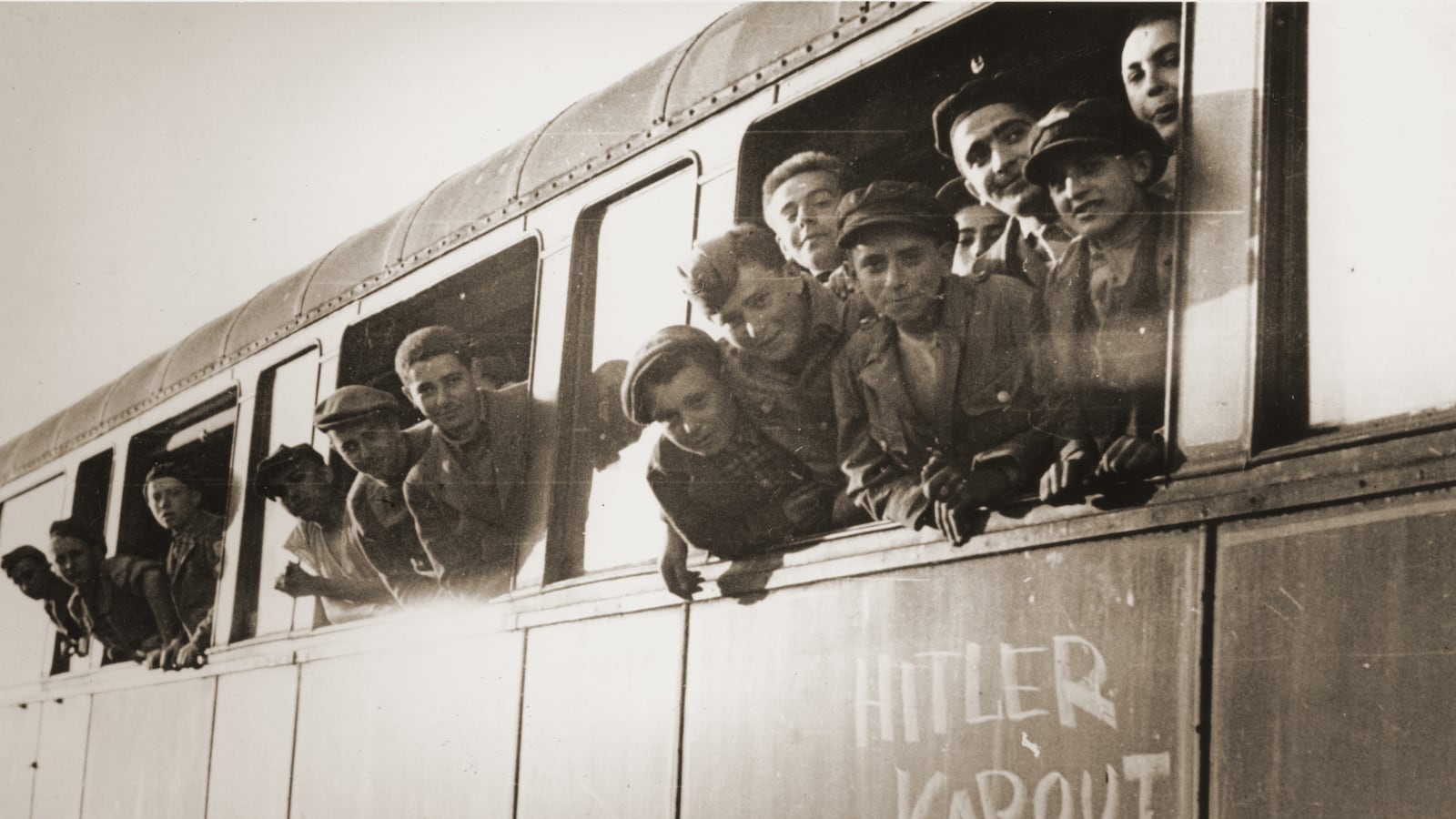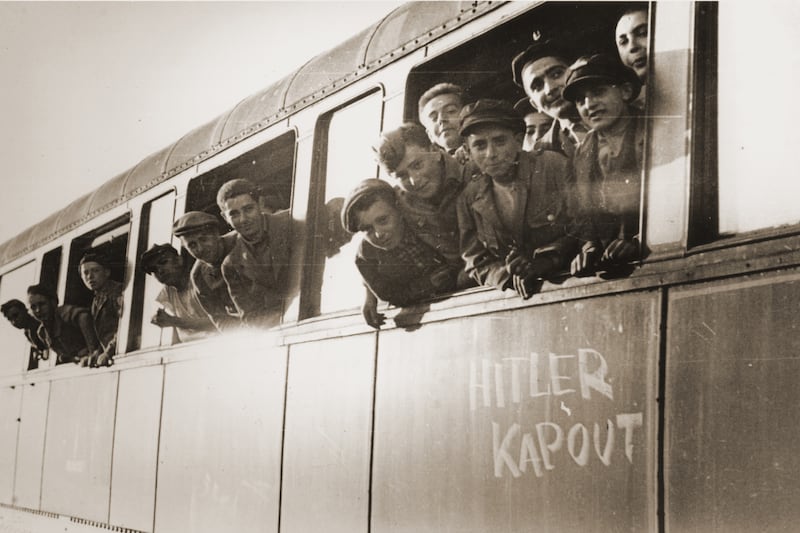
On April 11, 1945, U.S. soldiers from the 4th Armored Division and the 80th Infantry Division liberated Buchenwald. Constructed in 1937, Buchenwald and its satellite camps would become one of the largest concentration camps within traditional German borders. Initially the camp was just for male prisoners, until females were brought in sometime in late 1943 or early 1944. The camp was populated by political prisoners, Jews, recidivist criminals, Jehovah’s Witnesses, Roma and Sinti, deserters, “work-shy” individuals, homosexuals (who would be experimented upon), and POWs.
The image to the left, courtesy of the United States Holocaust Museum in Washington, D.C., is of Jewish youngsters liberated at Buchenwald leaning out the windows of a train as it pulls away from the station. The train, which has been marked with the phrase 'Hilter kapout [sic]' [Hitler is finished], transported the children to an OSE (Oeuvre de Secours aux Enfants) home in Ecouis, France.
United States Holocaust Memorial Museum, courtesy of Robert Waisman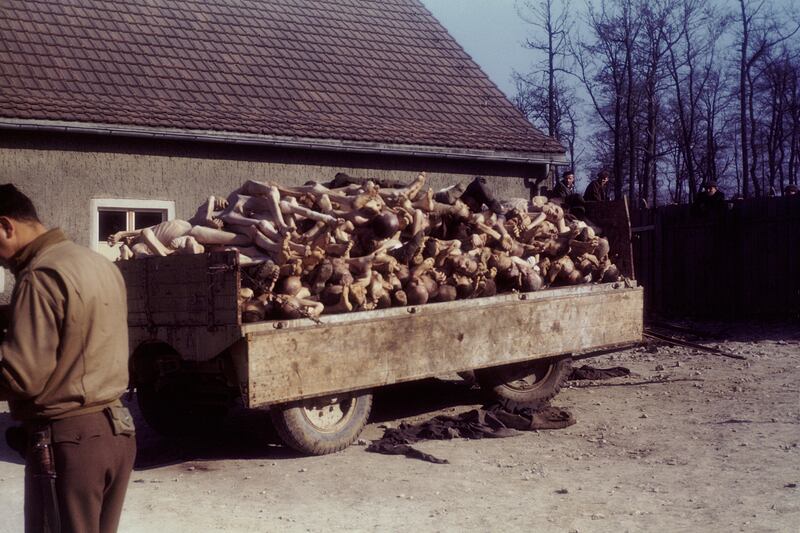
Roughly 250,000 people from across Europe were imprisoned in Buchenwald, but mortality figures are not exact as Nazi authorities never kept records for a large number of prisoners. However, at least 56,000 male prisoners were killed in the Buchenwald system, 11,000 of which were Jews, experts say.
In this image, an American soldier stands near a wagon piled high with corpses outside the crematorium in the newly liberated Buchenwald.
United States Holocaust Memorial Museum, courtesy of Patricia A. Yingst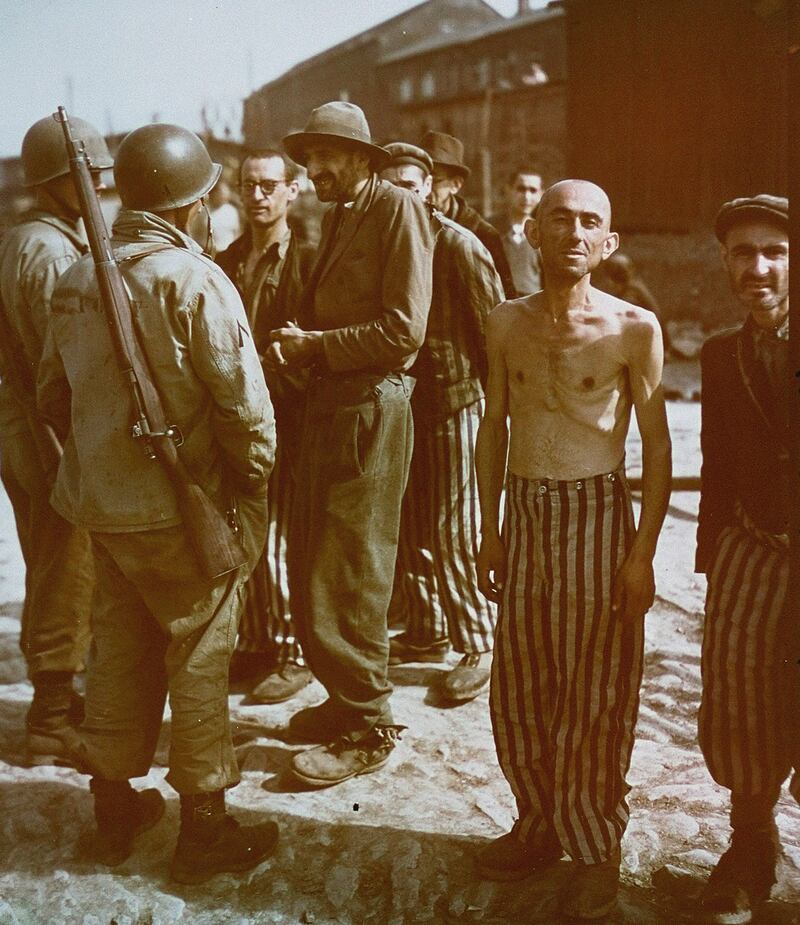
As American forces approached the main Buchenwald camp, Germans worked to evacuate roughly 28,000 prisoners, a third of which died from exhaustion or were shot by SS forces.
This image is of American soldiers speaking with a group of survivors while on a tour of Buchenwald.
United States Holocaust Memorial Museum, courtesy of National Archives and Records Administration, College Park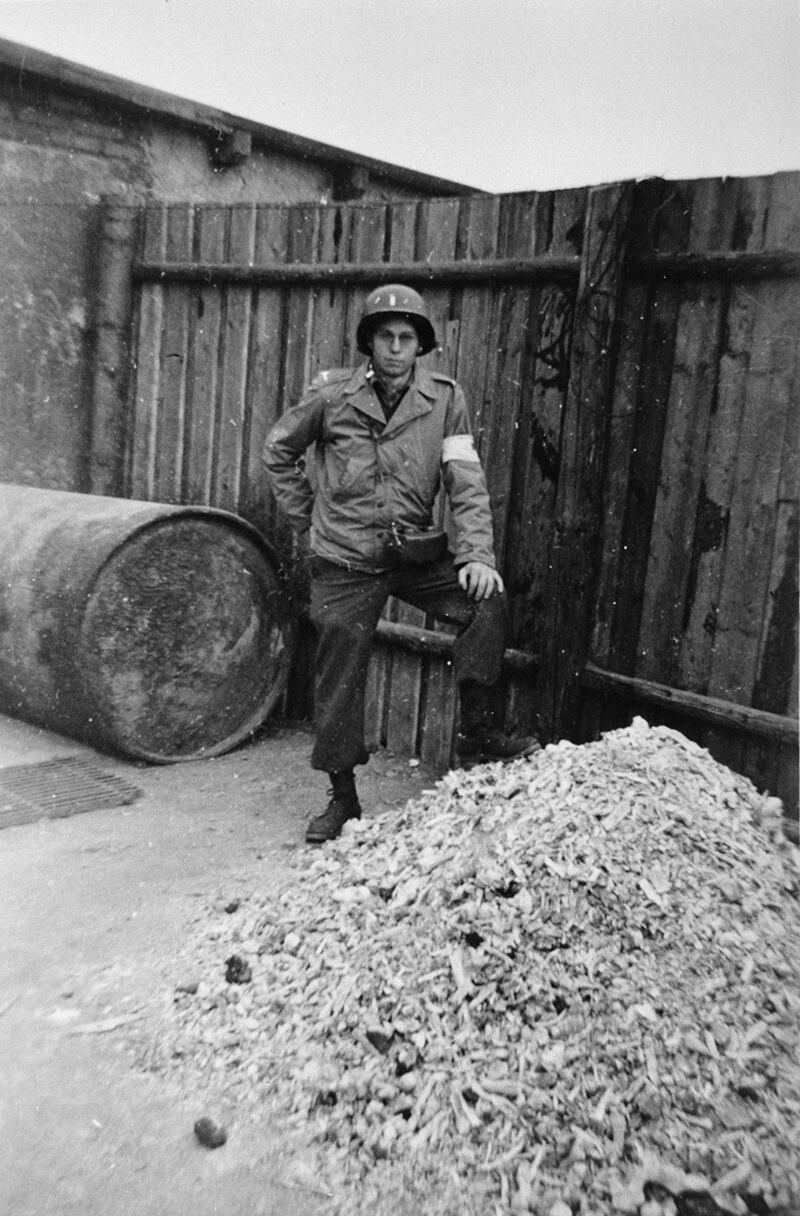
An American captain in the Red Cross leaning on a pile of bones during an inspection of Buchenwald.
United States Holocaust Memorial Museum, courtesy of Virginia Longest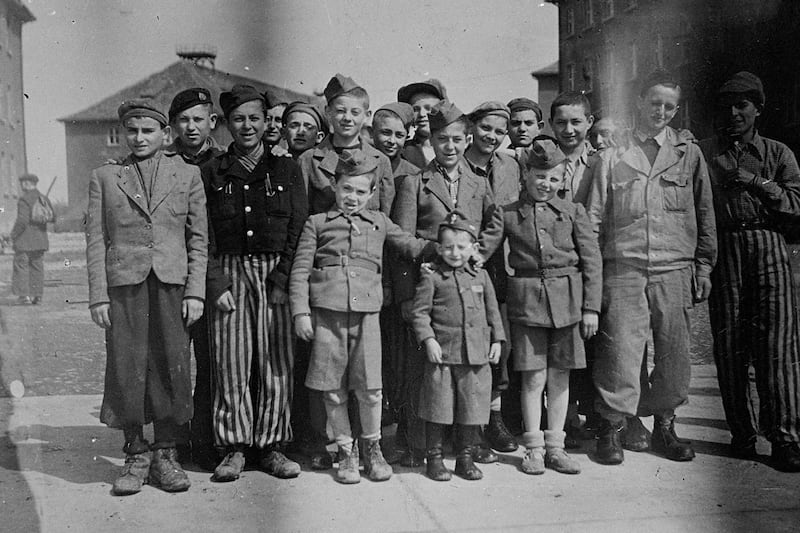
This is another group portrait of child survivors of Buchenwald. The young boy in the middle is Joseph Schleifstein. Behind him is Abram Wroclawski, originally from Lodz who was sent to Auschwitz before coming to Buchenwald.
United States Holocaust Memorial Museum, courtesy of Bernice Krinsky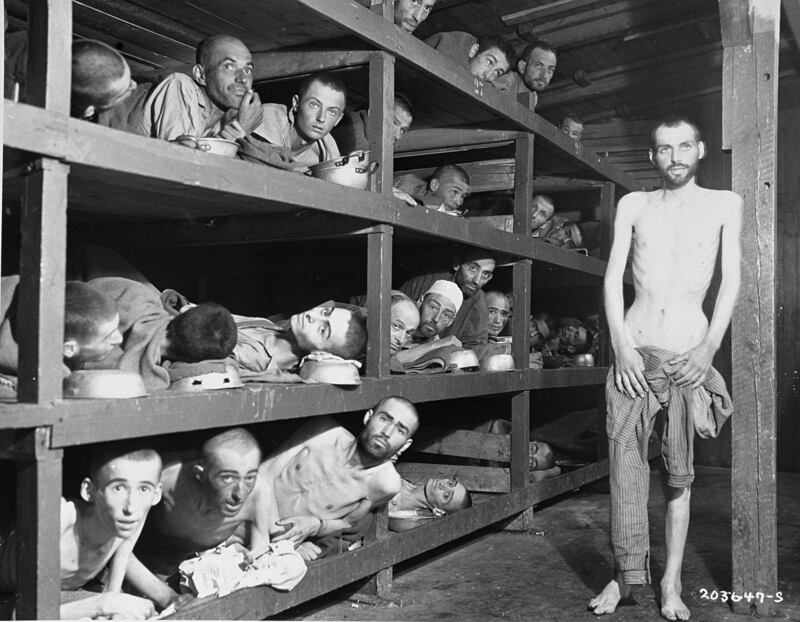
Former prisoners of the “little camp” in Buchenwald stare out from the wooden bunks in which they slept three to a “bed.” American doctors described the inmates they found as “the living dead.” In this image, author and Nobel Peace Prize laureate Elie Wiesel is pictured in the second row of bunks, seventh from the left, next to the vertical beam.
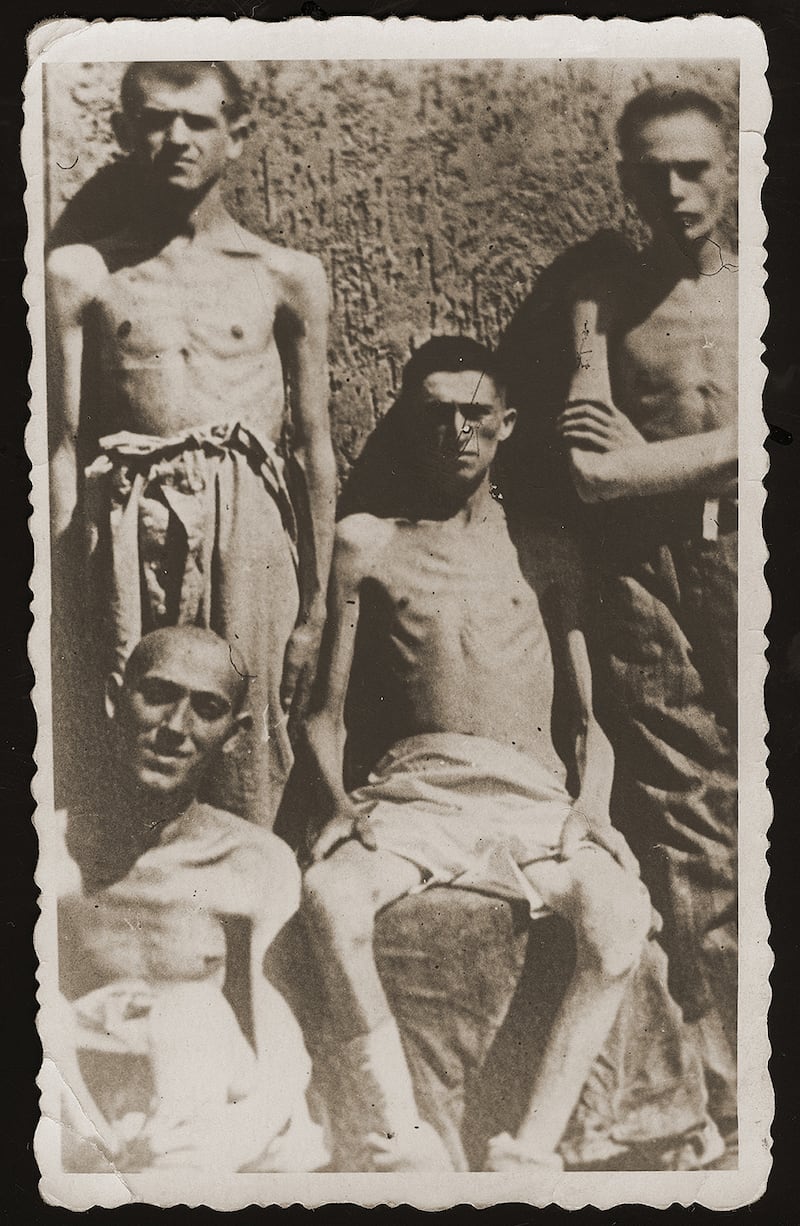
Group portrait of four Jewish youth at the liberation of Buchenwald.
United States Holocaust Memorial Museum, courtesy of Morris Rosen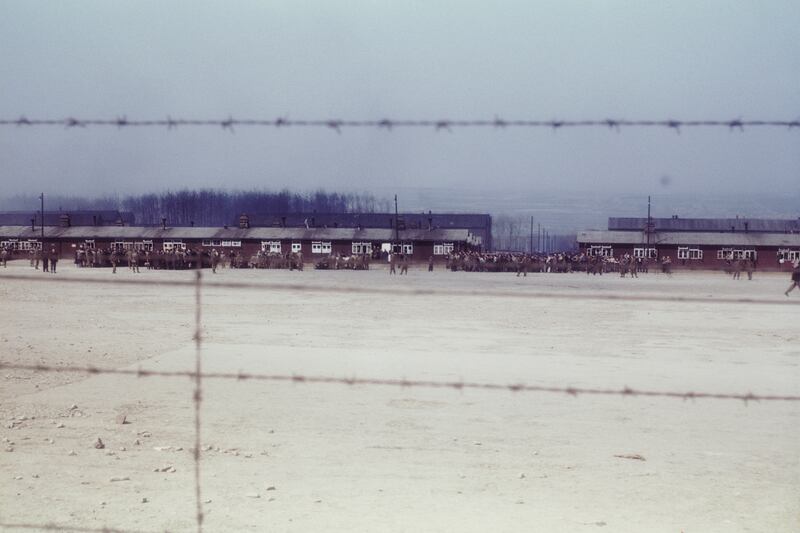
The Buchenwald camp was surrounded by electrified barbed-wire fence, watchtowers, and a series of sentries armed with automatic machine guns.
United States Holocaust Memorial Museum, courtesy of Patricia A. Yingst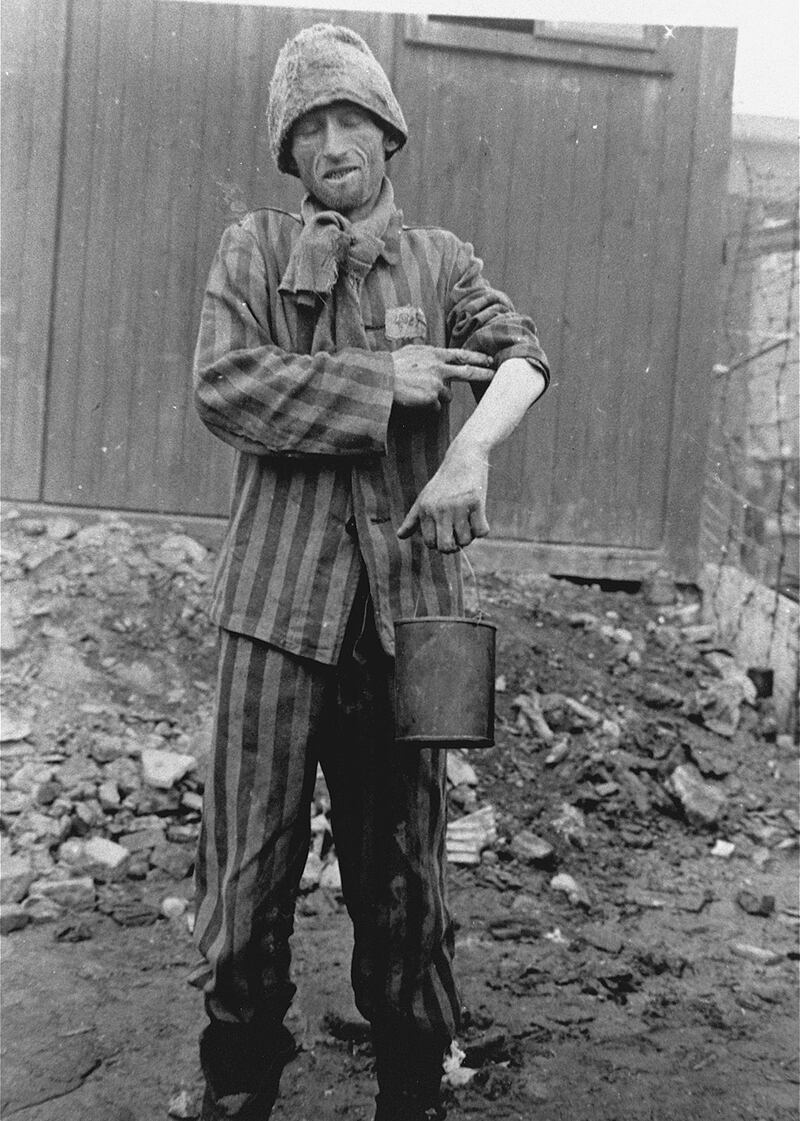
A survivor of Buchenwald shows the number tattoo on his left arm.
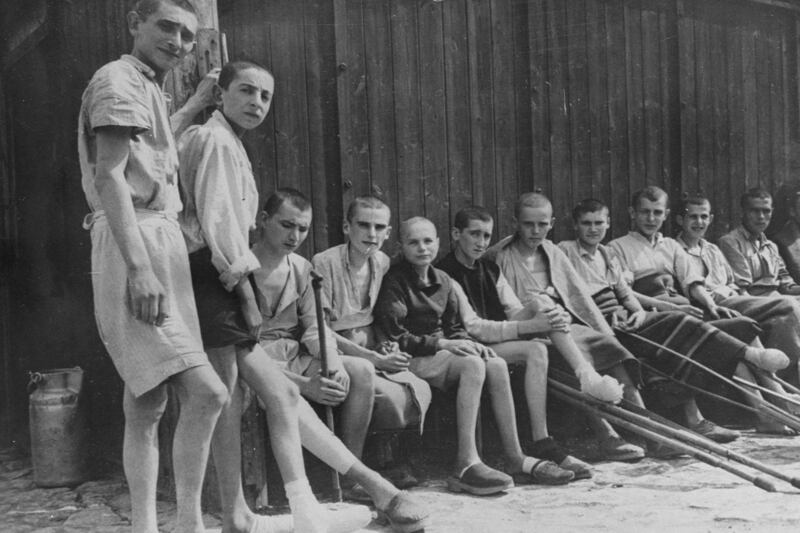
Crippled young survivors in Buchenwald after liberation.
All images were courtesy of the United States Holocaust Museum. For more information on the liberation, check out their page here.

